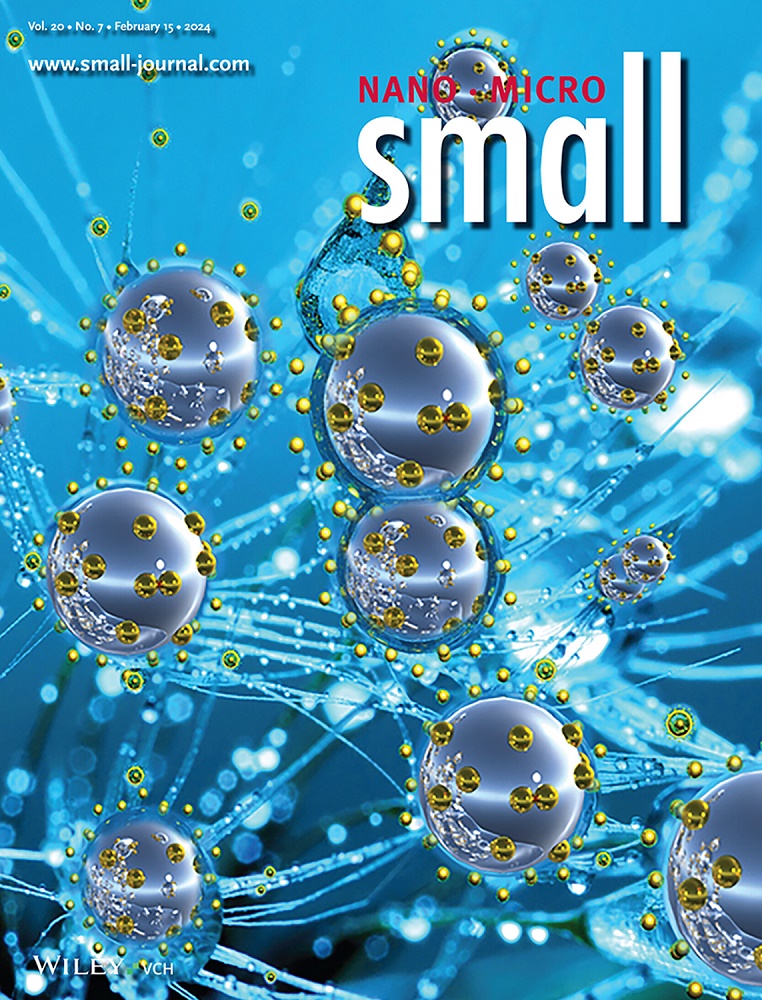金属和共价有机框架满足OB-GYN:推进妇女健康和妊娠护理的应用。
IF 12.1
2区 材料科学
Q1 CHEMISTRY, MULTIDISCIPLINARY
引用次数: 0
摘要
金属有机骨架(MOFs)和共价有机骨架(COFs)由于其高表面积、可调孔隙率和功能多功能性而成为生物医学应用的有前途的材料。功能化或含有纳米颗粒的mof和COFs已经在药物递送、光动力和光热治疗以及针对癌细胞的ROS生成等方面的临床前研究中得到了大量探索。此外,它们还显示出作为精确生物标志物识别和肿瘤检测的显像剂载体的潜力。然而,纳米材料在医学上的应用,包括mof和COFs,仍然没有达到二十多年前设定的期望。这在母胎领域尤其重要,因为许多妇女在怀孕和分娩期间面临巨大的孕产妇健康风险。直到最近才进行了一系列初步研究,因为这些风险传统上被认为是怀孕所固有的,在妇女健康的创新解决方案方面留下了巨大的空白,纳米材料有可能弥补这些空白。本文针对这一关键需求,总结了目前在妇产科和母胎应用mof和COFs方面的研究,指出了差距,旨在指导未来的研究,以扩大纳米医学在这些领域的影响。本文章由计算机程序翻译,如有差异,请以英文原文为准。
Metal and Covalent Organic Frameworks Meet OB-GYN: Advancing Applications in Women's Health and Pregnancy Care.
Metal-organic frameworks (MOFs) and Covalent-organic frameworks (COFs) are promising materials for biomedical applications due to their high surface area, tunable porosity, and functional versatility. Functionalized or nanoparticle-containing MOFs and COFs have been largely explored in preclinical studies for drug delivery, photodynamic and photothermal therapies, and ROS generation targeting cancer cells, among others. Additionally, they have shown potential as carriers of imaging agents for precise biomarker identification and tumor detection. However, the application of nanomaterials in medicine, including MOFs and COFs, still does not meet the expectations set more than two decades ago. This is particularly important in the maternal-fetal field, where substantial maternal health risks during pregnancy and childbirth affect many women. Only recently a range of preliminary studies exist, as these risks have traditionally been viewed as inherent to pregnancy, leaving significant gaps in innovative solutions for women's health that nanomaterials have the potential to bridge. This review addresses this critical need, offering a summary of current research in obstetrics and gynecology and maternal-fetal applications of MOFs and COFs, identifying gaps, and aiming to guide future research to expand nanomedicine's impact in these areas.
求助全文
通过发布文献求助,成功后即可免费获取论文全文。
去求助
来源期刊

Small
工程技术-材料科学:综合
CiteScore
17.70
自引率
3.80%
发文量
1830
审稿时长
2.1 months
期刊介绍:
Small serves as an exceptional platform for both experimental and theoretical studies in fundamental and applied interdisciplinary research at the nano- and microscale. The journal offers a compelling mix of peer-reviewed Research Articles, Reviews, Perspectives, and Comments.
With a remarkable 2022 Journal Impact Factor of 13.3 (Journal Citation Reports from Clarivate Analytics, 2023), Small remains among the top multidisciplinary journals, covering a wide range of topics at the interface of materials science, chemistry, physics, engineering, medicine, and biology.
Small's readership includes biochemists, biologists, biomedical scientists, chemists, engineers, information technologists, materials scientists, physicists, and theoreticians alike.
 求助内容:
求助内容: 应助结果提醒方式:
应助结果提醒方式:


